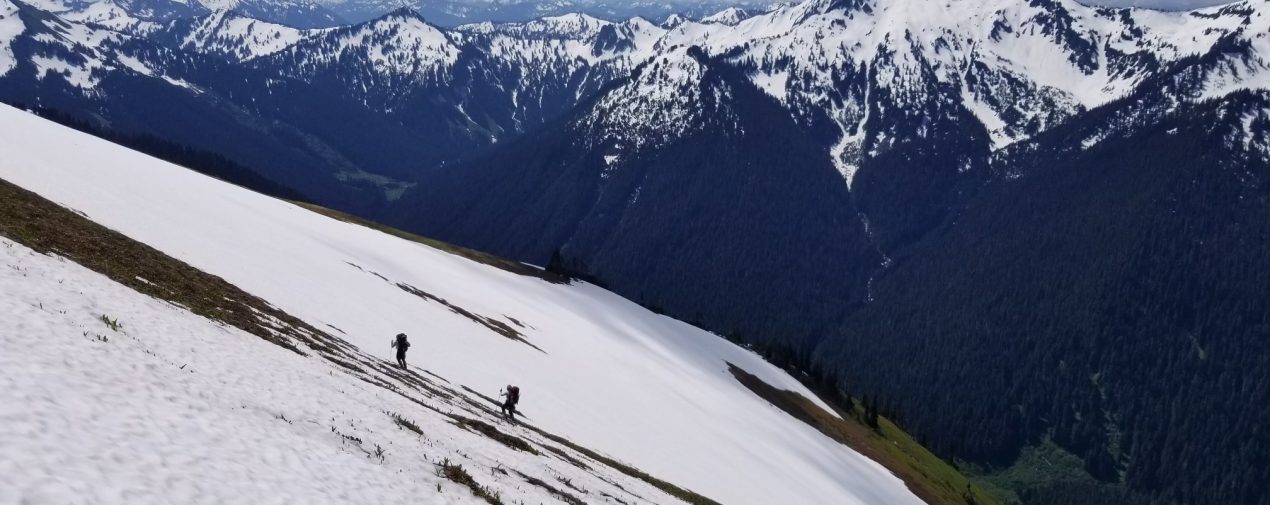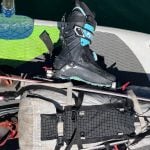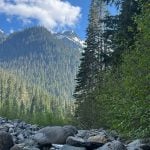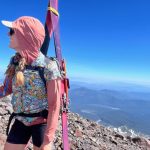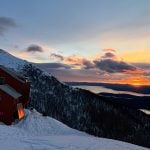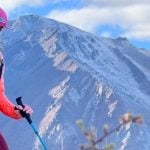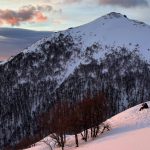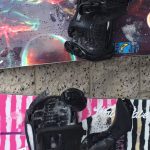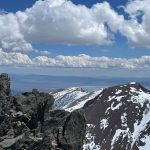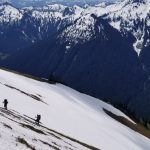Turns All Year: How and Why to Ski Every Month of the Year
For most skiers and riders, the ski season ends in April or May with slushy resort laps and costumed pond skims at the local hill. For the backcountry skier, springtime is when ski season turns on in full force with alpine couloir riding and improved access to the high country as high-elevation roads are plowed from their winter slumber. But for your average backcountry skier, the spring season too must come to an end as perfect corn becomes sun-cups and once snow-covered approaches turn to dirt. Most skiers hang up their boots, apply storage wax, and remove their beacon batteries for a summer of hiking, climbing, or paddling. The end of a ski season, days tallied and totalled.
As the coverage dwindles come early summer, patches of snow are left only in the highest and most shaded couloirs and glaciers of the alpine. The summer snow is nearly never good, nor is it usually continuous. To find the snow, you often must scour the internet for recent satellite maps and walk miles and miles of dirt and talus for a few turns of sun-cupped glory. In some places, the approach to snow might involve biking, scrambling, talus-hopping, and everything in between.
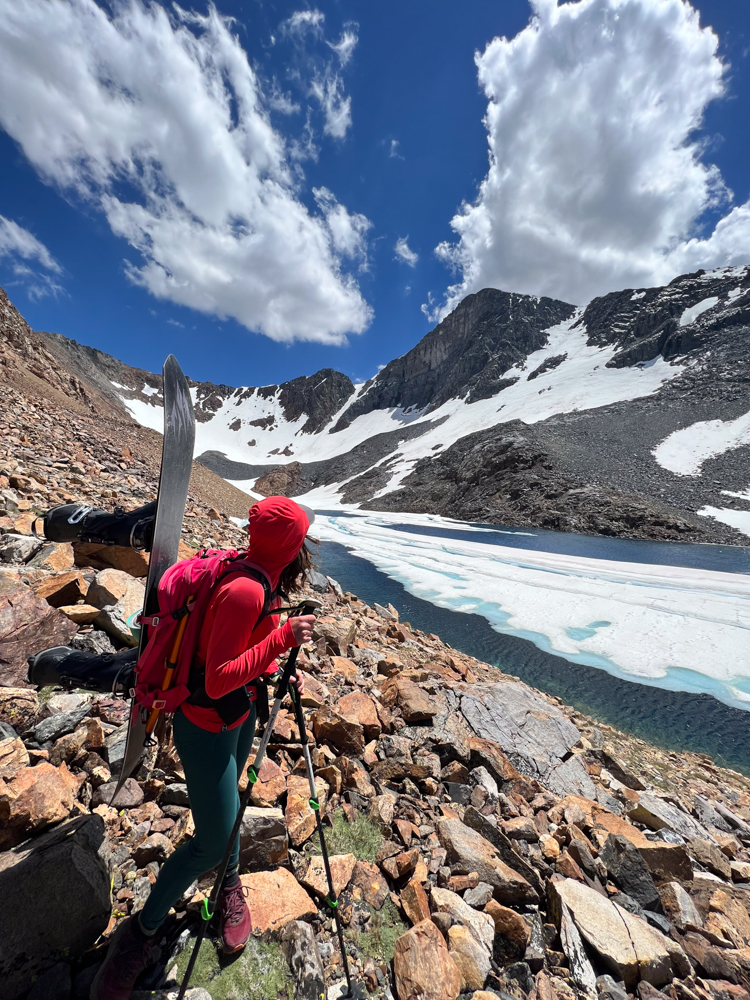
In these sheltered snowfields is where you find the most dedicated skiers: the love-of-sport folk undeterred by 12 mile dirt approaches, bushwacking with skis on backpacks, climbing couloirs in short-shorts for a last taste of the joy of sliding on snow. These are the turns-all-year people. Read on to learn about how and why I started making turns all year, and how you can do it too.
What Are “Turns All Year?”
“Turns all year” refers to skiing or riding every month of the year, for a continuous year. It doesn’t matter when in the month you ride, so long as you get your turns in at some point each month. It doesn’t matter what you ride to achieve your turns, or how pretty they are. You can use any form of approach to get to snow: be it lift access, biking, climbing, driving, or hiking.
My partner, Forrest, is a long-time turns-all-year person. He goes with the soft rule of at least 5 turns on snow to count his turns for that month. Nina, another turns-all-year person, has different rules for her turns. She simply says that you must be on skis or a board, and you must be sliding. She prefers to turn on snow whenever possible, but in a pinch once made her turns on turf in Lynchburg, Virginia. Everyone has their own rules that feel authentic to them, but Nina’s most important rule for herself is that her turns must involve some form of adventure.
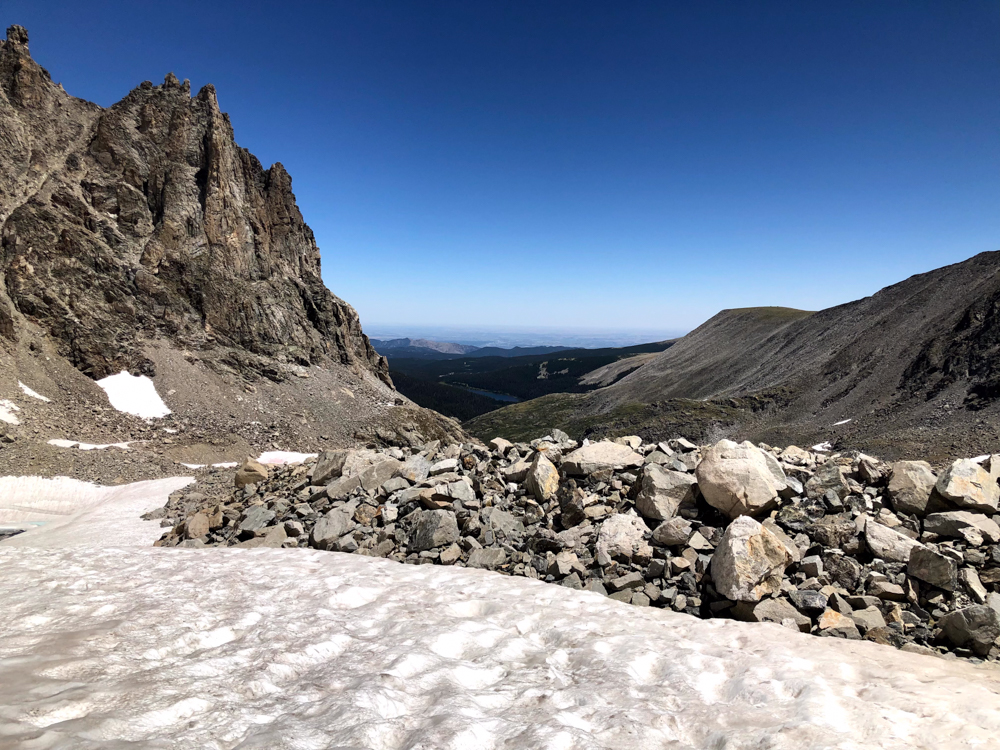
Why Make Turns All Year
One might ask why someone would want to make turns all year given the often-heinous riding conditions in the summer and fall. I’ll tell you this: it’s certainly not for powder turns.
For several years, I had nearly achieved turns-all-year, riding my splitboard well into June and July, only to waver in August and come up just short of my goal. The riding in July was sometimes pleasant, but as the snow really dwindled, the type-1 fun factor diminished. Enter: 2023 in the Sierra Nevada. It was a record snow year in my home mountain range, with a nearly 300% of average snowpack. I knew it was go-time for my turns-all-year journey to begin. Why did I want to do it, you may ask? Snow is at the core of everything for me: snow to slide on, snow as water, snow as life. To see a year of experiencing snow felt like a wonderful goal. Oh, and I love a good sufferfest.
Nina is from Washington state, and a die-hard turns-all-year person. Since moving away from Washington, she’s continued her turns all year from Colorado to the East Coast. She initially started making turns all year because it sounded like a good challenge, but she now imbues her turns with increased meaning. Nina says that turns all year gives her an interesting way to think about her own impact on snow through carbon emissions as she drives to do her summer turns on ever-waning snowfields. Watching snowfields and glaciers shrink in a changing climate, she’s tried to find more sustainable ways to get her turns in, like biking 65 miles and hiking another 10 from Boulder, Colorado to get her turns in on a remote snowfield.


Forrest is now at 91 consecutive months of turns all year. He jokes that he now does turns all year because he’s been doing it for so long that he doesn’t want to give up now. Forrest loves a reason to go out for a novel, often-solo day in the mountains to do something he finds objectively ridiculous, like skiing laps on a tiny patch of snow deep in the mountains for a little taste of winter.
Forrest, Nina, and I all love the adventure of doing something that takes us to new places that we wouldn’t have otherwise gone to without the motivation of finding a patch of snow to slide on. Forrest has climbed a 15-pitch, 5.6 rock climb with skis on his backpack in August, ridden machine-made snow on Halloween night, and eaten birthday cake with an ice ax after a 1,000 foot July descent. After hip surgery, Nina crutched around on skis in the Mount Baker parking lot for her turns. Highlights of mine include mountain biking to snowboarding and riding off the summit of Yosemite’s Mount Dana in August.
Some combination of perseverance, adventure, love of sport, creativity, and connection to snow are at the heart of turns all year for the few who do it. And of course: a mediocre turn or two always puts a grin on my face, no matter how horrific and sun-cupped.
Finding Snow All Year
Some places in the U.S. are more friendly for turns all year than others. Places with large glaciers and permanent snowfields, like the Cascades, are much easier places to find summer and fall turns. The Rockies and the Sierra Nevada are generally mediocre for finding reliable snow in the middle of summer, except in the biggest of years. This is because permanent snowfields and glaciers are few and far between in these places. Skiing the East is especially difficult, and requires extra creativity to make turns all year happen.

So, how do you find snow in the middle of summer?
Living in Mammoth Lakes, I often start by looking around outside to get a sense of where the snow is holding. Depending on the year, the snow can hold on in different places at different times of the year. Relatively reliably, the best places to look are:
- High elevations
- North-facing slopes
- Sheltered slopes, like couloirs
- Glaciers and permanent snowfields
Start by looking with your eyes, and then pull out the map, if possible. Using local knowledge of the features that hold snow well into the summer is also helpful.
To find slopes with snow in the middle of summer, I use satellite imagery through CalTopo Pro. To see the current snow coverage, I use CalTopo’s “MapBuilder Topo” layer and add a second “Sentinel Weekly” basemap at 50-70%, on the “Latest” setting. This allows me to overlay current satellite imagery of the snow coverage on top of a map of the area. I’ll scan the range for white patches to ski, ideally in proximity to a reasonable trail. Other options to look for on CalTopo include permanent snowfields and glaciers, outlined in pale blue. If traveling into glaciated terrain with crevasses, be sure to have proper rescue training.
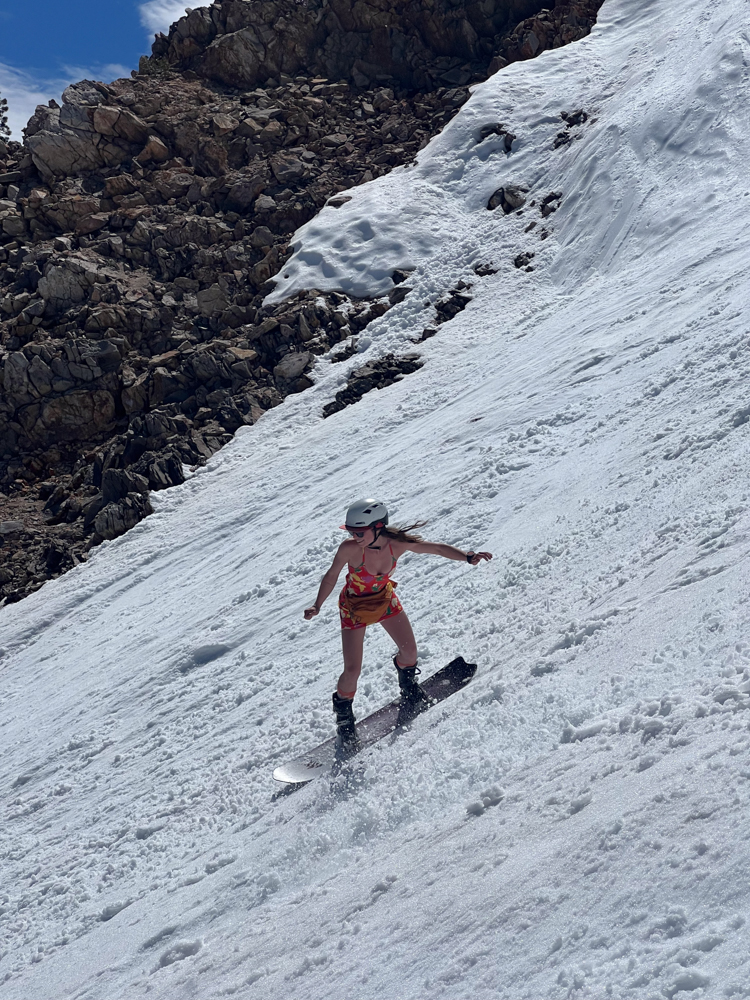
Turns All Year: By the Month
December to April
For most snow enthusiasts, the ski season begins in December and ends in April. During these months of the year, the ski resort or local backcountry terrain is your best bet for turns. Go skiing, enjoy it, and find good snow. There’s plenty of it in most places across the U.S. during this period, especially in the mountain west. This part of the year is a no-brainer.
April to May
After April, most resorts begin closing down. A few hold out into May, and even fewer into June. California’s Mammoth Mountain and Palisades Tahoe are decent bets into early summer. This said, April and May are excellent times for those with avalanche education to get out into the backcountry, and go for a ride. There’s usually still abundant snow at high trailheads (above 10,000 feet in the Sierra), and much of it is rippable corn. This part of the year is also prime time for riding volcanoes in the Pacific Northwest as the snowpack stabilizes.
June to July
Skiing in June and July often means riding sun cups, but can still yield halfway decent snow depending on where you go and what the season has looked like. It’s the time to wear trail runners to the base of ski lines. By this point in the year, I’m usually using my CalTopo Pro account to look at recent satellite imagery overlays to locate the snow. By July, snow cover is extremely sparse most years, and hunting snow down becomes much more difficult: that said, I’ve ridden 1,000 foot lines in July.
Tip: wait until late in the day to ride. The snow has gone through a whole lot of melt-freeze cycles by this point, and will often be firm until the sun softens it enough to ride.
August to September
Almost all resorts are shut down by this point, besides Oregon’s Timberline, and Montana’s summer-only Beartooth Basin. That said, in 2024, Beartooth Basin won’t be opening due to low snow totals. As the climate changes and snow coverage becomes more unpredictable, relying on resorts for turns all year will become more and more challenging.
In August, do your best to find whatever patches you can find using the parameters above: high, north, sheltered, and permanent. The riding is unlikely to be any good, but you’re sure to have an adventurous day out. September is a dire month. Take what you can get, and revel in the ridiculous-ness. Again, wait until late in the day for the snow to soften. The main hazard this time of year is slide-for-life conditions.
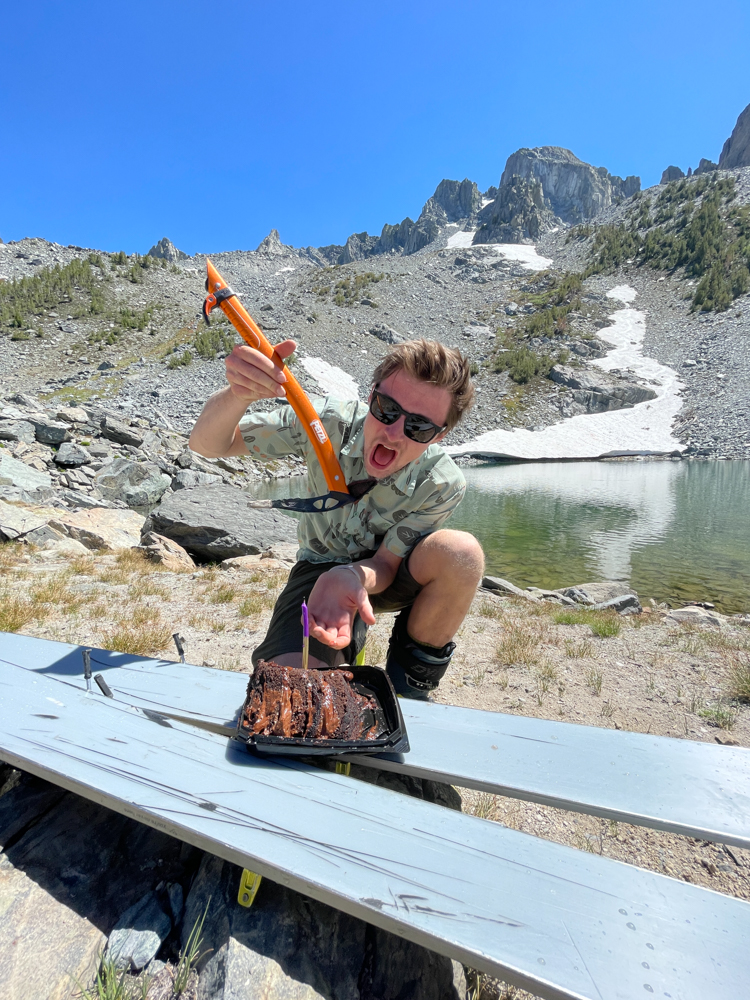
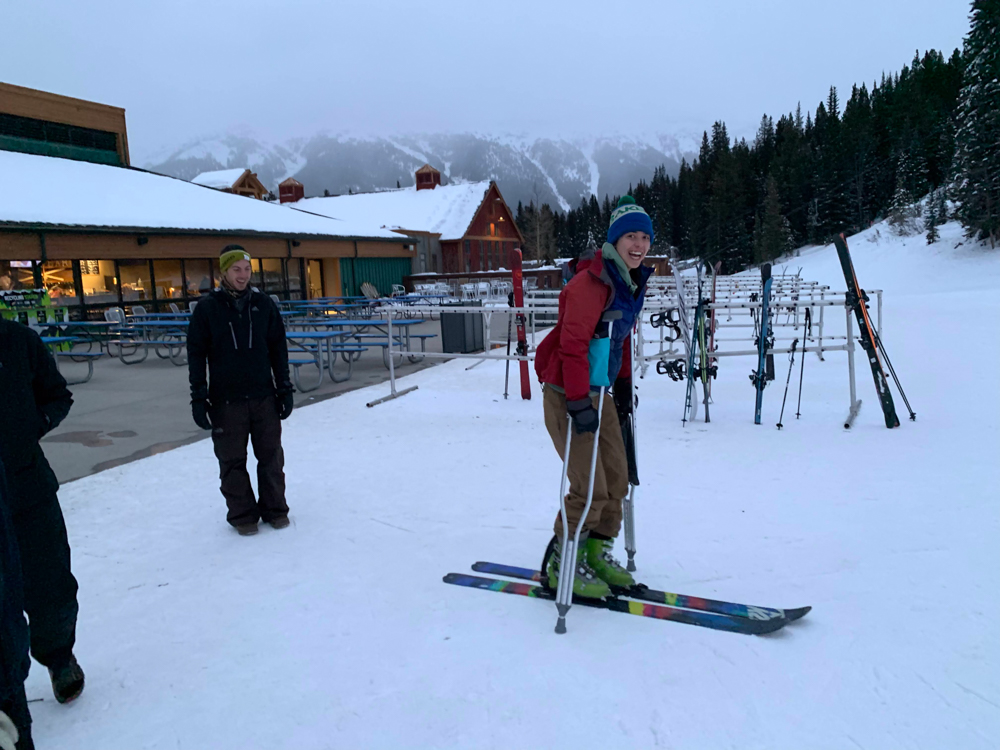
October to November
October and November are variable months in the mountains, ski resorts and backcountry alike. If you’ve ever heard a backcountry skier use the term “variable,” you know it doesn’t mean anything good. Sometimes the local resort is open with limited terrain, and sometimes, the hill is dry. October can be the beginning of snow in the backcountry. If it snows, go somewhere that you know had a snowfield around from the year before, and ride some dust on crust. Remember that if there’s enough snow to ride, there’s enough snow to slide. Use CalTopo to find the spots by selecting a satellite imagery date from before the new snow event. Snowmaking helps in November: my local hill, Mammoth Mountain, is sure to start their snowmaking operations as soon as the overnight temperatures are freezing. Resorts in Colorado also tend to open around November. That’s not the case everywhere. Use the same principles as August to September, and as soon as your local resort opens, use it!
The Final Word
If you’re thinking about trying to make turns all year, try it. Like most mountain sports, it’s a silly pursuit. But for those who do it, it’s another way to make meaning in the mountains, explore new places, and find challenge and adventure. Sliding on snow is a pointless pursuit, but something about doing it in August feels extra special: and just a few turns are sure to brighten just about any skier or rider’s month. Wax your board or skis, put on some trail runners and a tank top, and get out there.
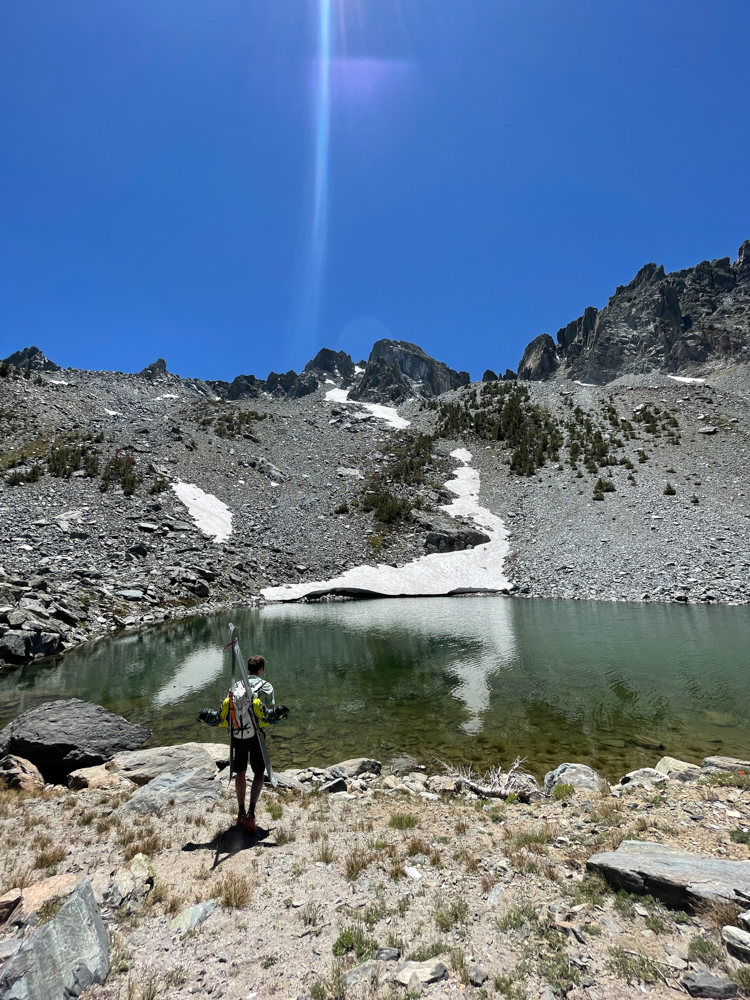
About the Gear Tester
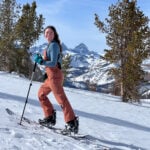
Jackie Florman
Jackie is a backpacking guide at Lasting Adventures Guide Service in Yosemite National Park, CA. She also works on a snow hydrology field research team, writes for HikingDaily.com, and is currently writing a thesis in Environmental Studies at the University of Colorado, Boulder. She loves splitboarding, scrambling, and rambling around in the Eastern Sierra and the Colorado Rockies. Follow her adventures on instagram @jackieeflor.

